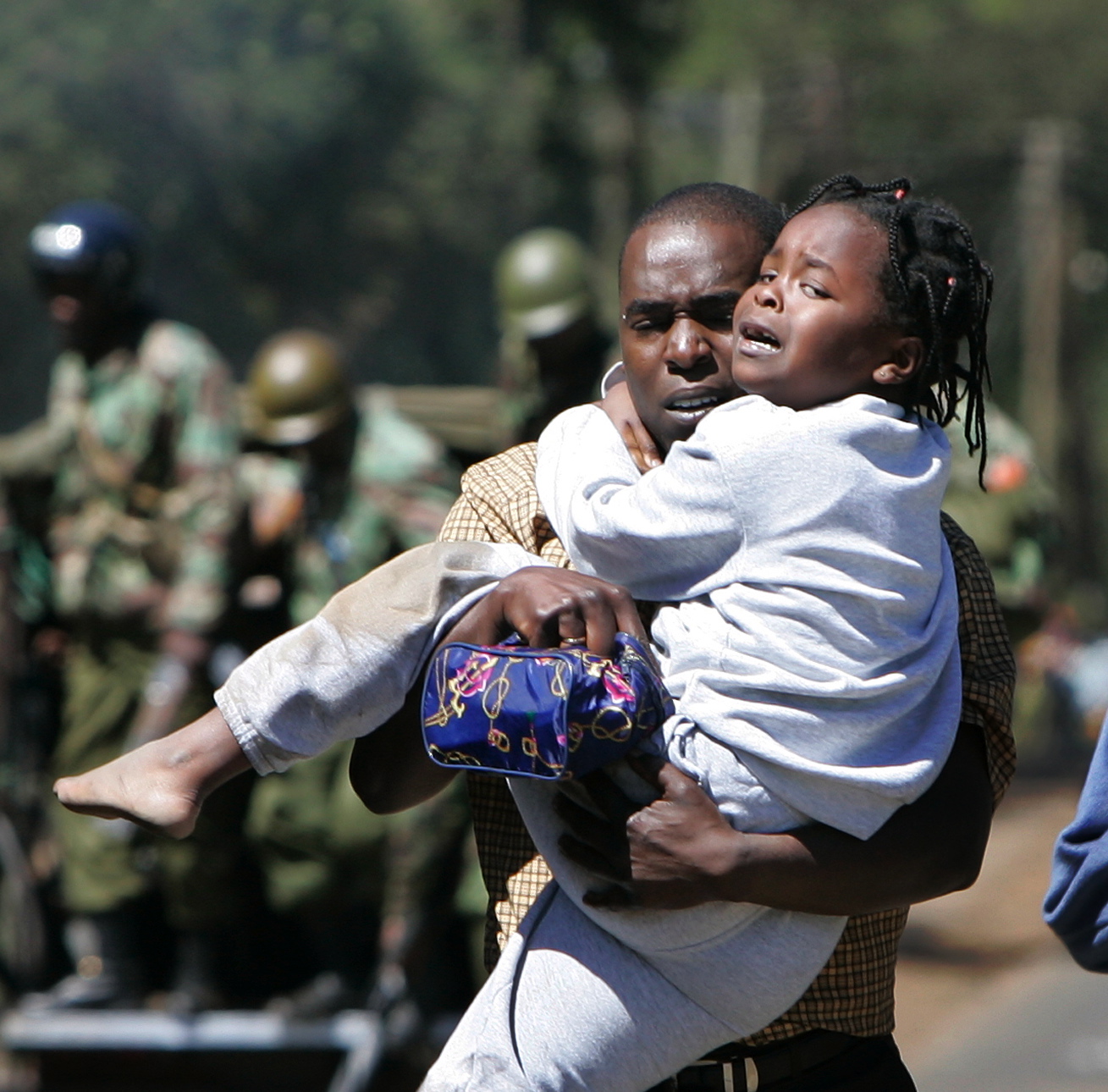Police used tear gas, water cannons and batons Thursday to block thousands of people from protesting Kenya’s disputed election amid a political deadlock between the president and his chief rival.
The U.S. and Europe pushed for reconciliation, but said a ”made-in-Kenya solution” is needed to end the violence that has killed 300 people and displaced 100,000 since President Mwai Kibaki was declared the winner of the Dec. 27 polls.
Jendayi Frazer, the top U.S. diplomat for Africa, planned to leave Thursday for talks with Kibaki and opposition leader Raila Odinga, U.S. State Department spokesman Sean McCormack said. McCormack said Frazer would not serve as a mediator _ Kibaki has rejected such outside help. McCormack said she would try to encourage the leaders to get together and work toward a political solution. It was not clear how long Frazer would be in Kenya.
”War is happening here,” said 45-year-old Edwin Mukathia, who was among thousands of people who poured out of Nairobi’s slums to heed Odinga’s call for a million man march in the city’s Uhuru Park.
But Mukathia and the others were kept at bay by riot police, who choked off the roads and fired live bullets over their heads. Opposition leaders canceled the march but said they would hold it Friday, setting the stage for yet another day of upheaval as one of Africa’s top tourist draws and one of the continent’s most stable democracies approaches chaos.
The violent images _ of burning churches, machete-wielding gangs, looters making off with petrol _ are heartbreakingly common in a region that includes war-ravaged Somalia and Sudan. But Kenya had been spared.
”There is no food, there is no water,” said Peter Ochieng, 37, who lives in the Kibera slum, home to tens of thousands of opposition supporters. ”People here are dying.”
Smoke from burning tires and debris rose from barricaded streets Thursday, around Nairobi’s huge slums where hundreds of thousands of Odinga’s supporters live, as well as on main roads leading into suburbs that are home to upper class Kenyans and expatriates.
The dispute has degenerated into violence pitting Kibaki’s influential Kikuyus against Odinga’s Luos and other tribes.
In the Mathare slum, rival groups of men hurled rocks at each other. Black smoke billowed from a burning gas station, and several charred cars sat on roads. The corpse of a man lay face down on a muddy path, and a wailing wife pulled her battered husband from the dark waters of the Nairobi River, where he had been dumped and left for dead.
The upheaval stretches from the capital to the coast to the western highlands. Hundreds of young men marched Thursday in the coastal resort of Mombasa but were quickly repulsed by security forces. Police shot one protester in the head and he was taken to a hospital, said witness Moses Baya.
Kenya’s electoral commission said Kibaki had won the Dec. 27 vote, but Odinga alleged the vote was rigged and international observations say it was flawed. On Thursday, Attorney General Amos Wako called for an independent probe of the counting.
Wako did not elaborate or say whether an independent body would include foreign observers, and it was unclear whether he had Kibaki’s backing or had made the statement independently.
Wako, who was appointed to his lifetime post by former President Daniel arap Moi, has been seen as close to Kibaki. The decision to launch an independent election probe was a surprise and could reflect the seriousness of the rigging allegations. But the government has a long history of appointing independent commissions to investigate wrongdoing, only to have them take years and end with reports that are never released and have no practical effects.
Government spokesman Alfred Mutua told The Associated Press he had ”no problem” with Wako’s call. But Odinga’s spokesman, Salim Lone, rejected it, saying his party had ”no faith in any government institution.”
As attempts at mediating the crisis gained momentum, Kibaki said he was willing to hold talks.
”I am ready to have dialogue with concerned parties once the nation is calm and the political temperatures are lowered enough for constructive and productive engagement,” Kibaki said.
South African Nobel peace laureate Desmond Tutu met Odinga in Nairobi Thursday, saying afterward that Odinga was ready for ”the possibility of mediation.” Tutu gave no details but said he hoped to meet Kibaki as well.
Government spokesman Mutua, however, said Kibaki had no plans yet for such a meeting and that Kenya had no need for mediators. ”We are not in a civil war,” he said.
The U.S. State Department said Secretary of State Condoleezza Rice made three telephone calls Thursday to discuss developments in Kenya: one to Kibaki, one to European Union foreign policy chief Javier Solana, and one to the U.S. Ambassador Michael Ranneberger.
The department disputed the E.U. official’s characterization of the Rice-Solana conversation, saying that while the pair had agreed on the need for political reconciliation between the Kenyan rivals but neither had specifically endorsed the formation of coalition or a government of national unity.
”Fundamentally, this needs to be a ‘made-in-Kenya’ solution,” State Department spokesman McCormack said.
As the diplomats discussed unity, front-page calls in all Kenya’s main newspapers Thursday for leaders to ”save our beloved country.”
Odinga toured Nairobi’s City Mortuary, which was full of piles of bodies of babies, children, young men and women. Some were burned, while others had head wounds. Many did not have visible wounds. It was unclear when they had died, but opposition officials said some were killed Thursday.
”What we have just seen defies description,” Odinga said after the visit. ”We can only describe it as genocide on a grand scale.”







